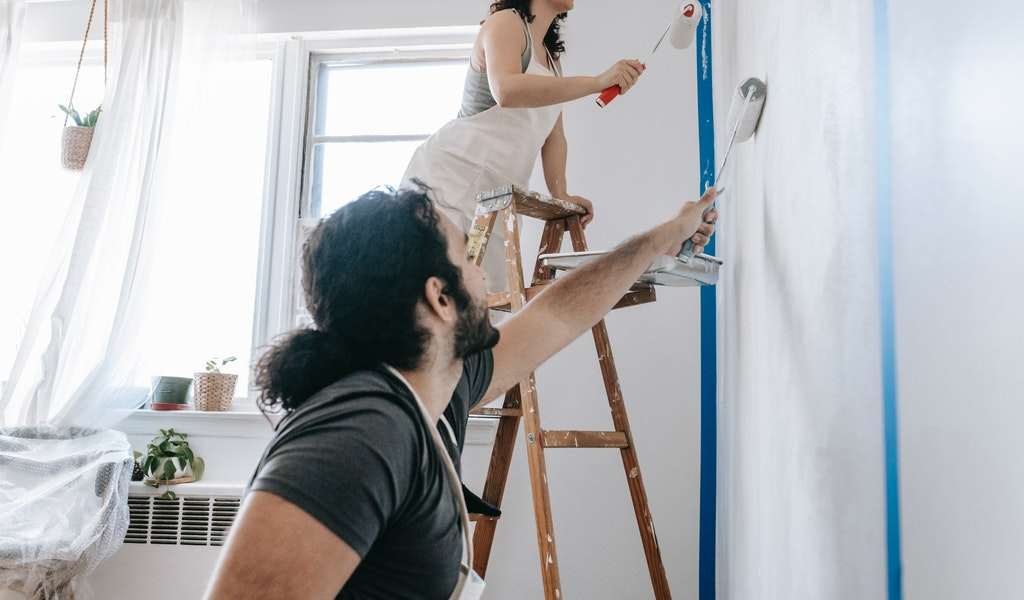Do you need to paint a room or want to supervise the proper execution of work in your home? It would help if you considered when preparing to paint walls to obtain a perfect finish in this post.
Preparation for painting walls
Suppose you want to achieve a perfect result when painting walls. Do not underestimate the stages before the final painting. So before you take out the roller and open the can of paint, it is important to keep in mind that the preparation of the wall will have a direct impact on the final finish. Cleaning the wall, filling holes and cracks, and applying a primer coat. Now let’s see the following stages used by maler to achieve a perfect wall painting.
Empty the room and protect the floor before painting
It is necessary to empty the room as much as possible. If a piece of furniture cannot be disassembled and requires too much effort to be moved out of the room, the ideal would be to place it in the center and protect it with a plastic sheet.
To protect the floor, malerfirma uses cardboard boxes that you will glue together on the bottom. They do not recommend using old textiles to protect the furniture and the floor, as they are not impervious to liquids, and the paint could pass through the fabric.
Preparing the walls before painting
Windows, doors, and other outlets, the walls of a room include elements that should be protected before starting to paint. First of all, take pictures and other decorative objects off the wall. Remove curtains from windows as well as rods or rails.
Think about protecting the skirting boards, door, and window frames with adhesive tape, drawing as straight a line as possible with the tape. It ensures a perfect finish between the painted wall and these elements. On the other hand, put screws into the wall studs so that the paint does not accumulate inside.
Finally, it is recommended to remove the plugs. Please turn off the power, remove plugs, switches, and wall lights, and put them undercover in another room. It would help if you placed dominoes on the wires coming out of the wall for your safety. Thus, you avoid the risks of short circuits and electrocution.
Remove old wall covering
Does your decorating idea include replacing the baseboards in the room? Use a chisel and hammer to peel them off the wall to do this. If the walls are painted, the current paint condition should be evaluated. It is perfectly possible to apply new layers to plastic paint.
If the walls are covered with wallpaper, they should be removed before starting to paint since paint should never be applied over wallpaper. You can buy or rent a steam wallpaper remover or apply a remover product that dissolves the glue used for your application.
Consider protecting your hands with gloves as wallpaper glue and products made to remove it can be aggressive. Remember that the glue must completely disappear from the wall, or it could cause the paint to adhere poorly or unevenly to the support. Once you have completed this step, it is good to clean the wall well to finish the job.
Restore the wall before applying paint
The work carried out in the previous stages and the passing of the years will most likely have caused some damage to the wall. To make them disappear, you can pull them out or push them in and then cover them with putty. Also, remove spikes, broken thumbtacks, and anything else that might get caught in the wall with pliers.
If you detect microcracks, they recommend widening them so that you can better cover them and prevent them from forming again. Remember that not all filler plasters are the same, so don’t hesitate to consult our paint specialists for the perfect uniform finish.
Once the plaster has dried, finish sanding. It is an essential step because you will see at this point if your repairs have been carried out correctly. If defects appear, feel free to re-plaster the wall and sand again. It is very important to keep in mind that the visible defects in this step will not be masked by the paint and may even be more noticeable.
Prepare the wall with a coat of primer
The last step in preparing a wall before painting would be to heal the wall. If damp or mold stains tend to appear on the walls, you can clean them with bleach or with a stain-repellent or damp-proof fungicide product. By the way, check that the wall does not receive water from the outside and make the necessary arrangements if it is the case.
Once the wall is clean, dry, and smooth, it is time to apply one or two coats of primer, especially if the surface is porous. These layers of preparation will fix the visible layer of paint to the support. Don’t underestimate this step. Primer paints ensure that the result has a uniform and perfect finish. Certain actions may seem complicated, particularly repairs to old walls.

















